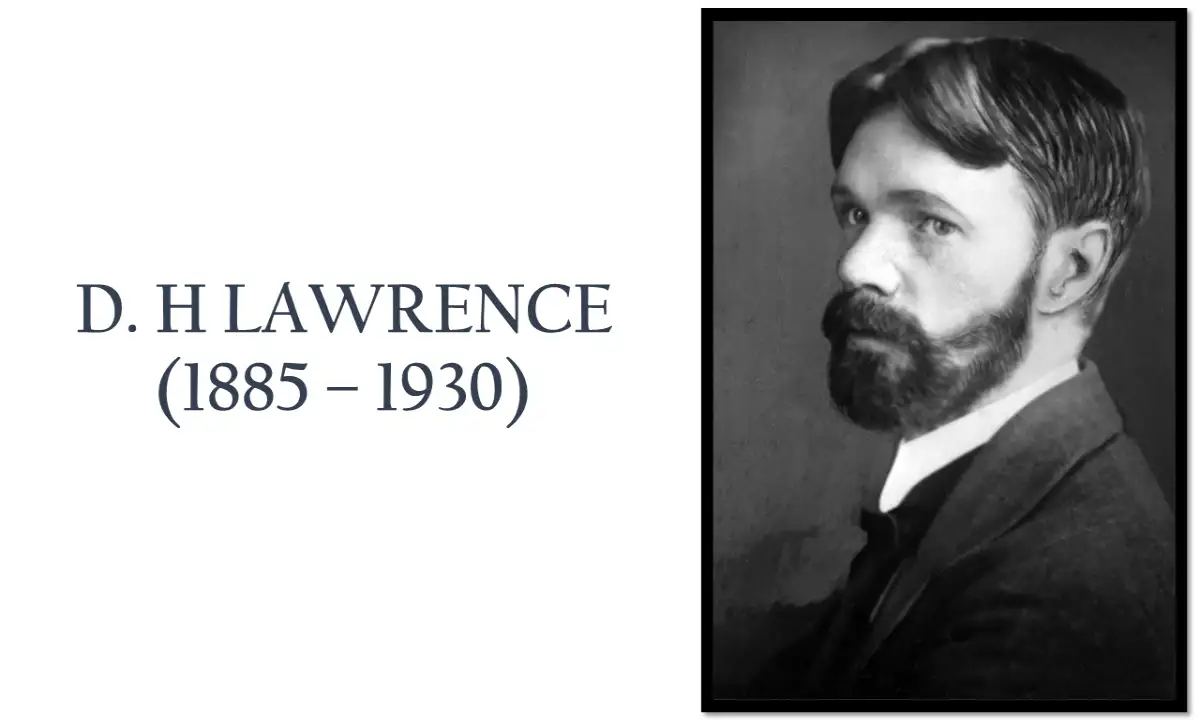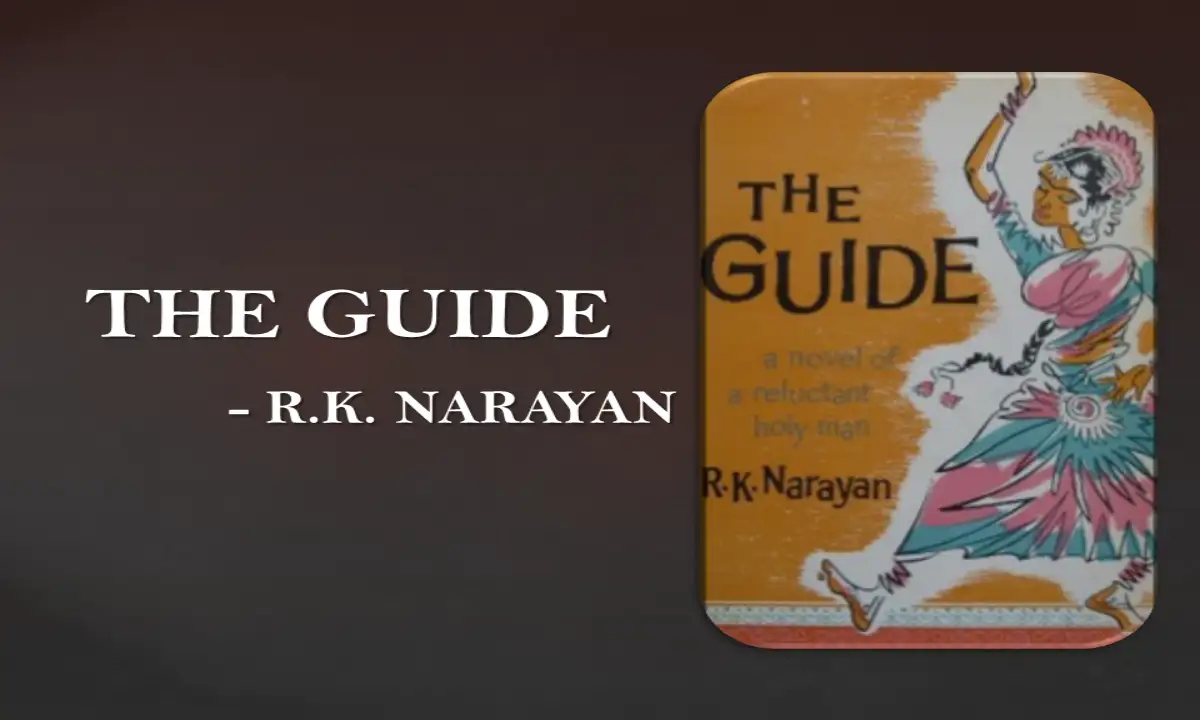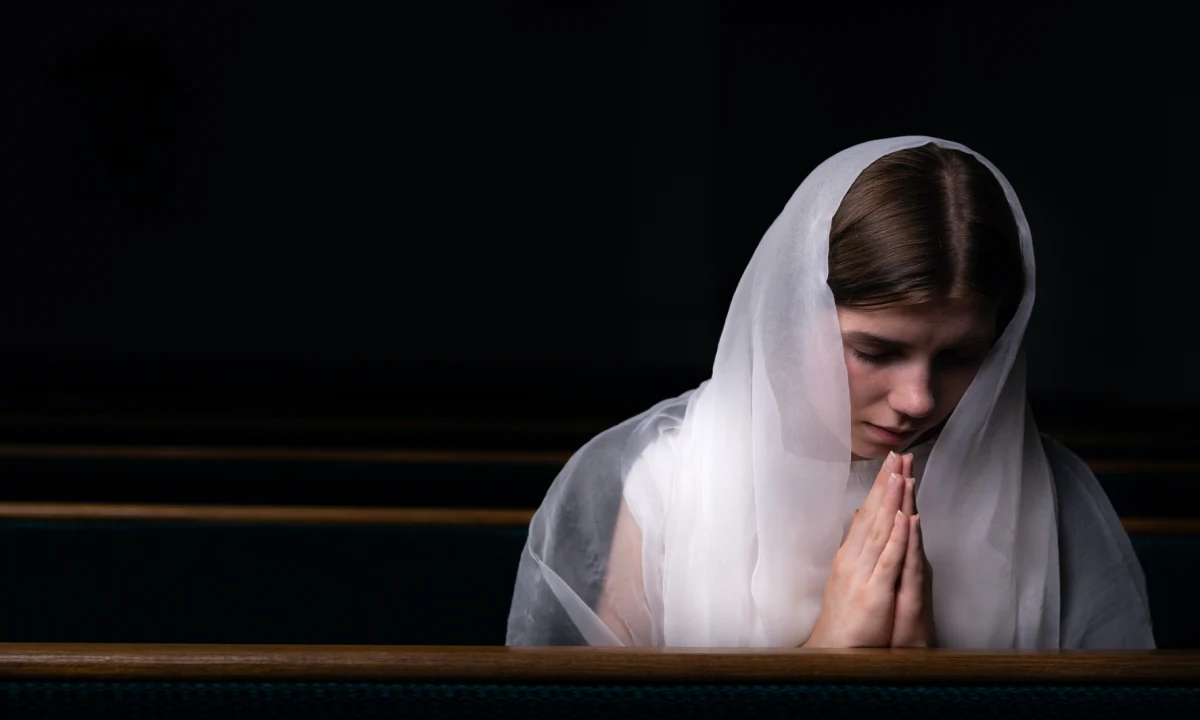David Herbert Lawrence
- Born on : 11 September 1885.
- Died on : 2 March 1930.
- English writer, novelist, short story writer, poet and essayist.
- Mainly wrote modernist fiction.
- They reflect on modernity, social alienation and industrialization, while championing sexuality, vitality and instinct.
Early Life
Lawrence was the fourth child of a north Midlands coal miner who had worked from the age of 10, was a dialect speaker, a drinker, and virtually illiterate. Lawrence’s mother, who came from the south of England, was educated, refined, and pious.
Lawrence won a scholarship to Nottingham High School (1898–1901) and left at 16 to earn a living as clerk in a factory, but he had to give up work after a first attack of pneumonia. While convalescing, he began visiting the Haggs Farm nearby and began an intense friendship (1902–10) with Jessie Chambers.
Encouraged by Jessie, he began to write in 1905; his first story was published in a local newspaper in 1907. He studied at University College, Nottingham, from 1906 to 1908, earning a teacher’s certificate, and went on writing poems and stories and drafting his first novel, The White Peacock. The Eastwood setting, especially the contrast between mining town and unspoiled countryside, the life and culture of the miners, the strife between his parents, and its effect on his tortured relationship with Jessie all became themes of Lawrence’s early short stories and novels.
The White Peacock was published in 1911, just after the death of Lawrence’s mother, his break with Jessie, and his engagement to Louie Burrows.
His second novel, The Trespasser (1912), gained the interest of the influential editor Edward Garnett, who secured the third novel, Sons and Lovers, for his own firm, Duckworth. He broke his engagement to Louie and decided to give up teaching and live by writing, preferably abroad. Most importantly, he fell in love and eloped with Frieda Weekley (née von Richthofen), the aristocratic German wife of a professor at Nottingham. The couple went first to Germany and then to Italy, where Lawrence completed Sons and Lovers.
They were married in England in 1914 after Frieda’s divorce.
Sons and Lovers
The book depicts Eastwood and the Haggs Farm, the twin poles of Lawrence’s early life, with vivid realism.
The central character, Paul Morel, is naturally identified as Lawrence; the miner-father who drinks and the powerful mother who resists him are clearly modeled on his parents; and the painful devotion of Miriam Leivers resembles that of Jessie Chambers.
An older brother, William, who dies young, parallels Lawrence’s brother Ernest, who met an early death. In the novel, the mother turns to her elder son William for emotional fulfillment in place of his father. Paul’s adolescent love for Miriam is undermined by his mother’s dominance; though fatally attracted to Miriam, Paul cannot be sexually involved with anyone so like his mother, and the sexual relationship he forces on her proves a disaster.
He then, in reaction, has a passionate affair with a married woman, Clara Dawes, in what is the only purely imaginary part of the novel. Clara’s husband is a drunken workingman whom she has undermined by her social and intellectual superiority, so their situation mirrors that of the Morels. Though Clara wants more from him, Paul can manage sexual passion only when it is split off from commitment; their affair ends after Paul and Dawes have a murderous fight, and Clara returns to her husband.
Paul, for all his intelligence, cannot fully grasp his own unconscious motivations, but Lawrence silently conveys them in the pattern of the plot. Paul can only be released by his mother’s death, and at the end of the book, he is at last free to take up his own life, though it remains uncertain whether he can finally overcome her influence. The whole narrative can be seen as Lawrence’s psychoanalytic study of his own case, a young man’s struggle to gain detachment from his mother.
There exist certain written documents by Lawrence as well as by his sister Ada that establish the close resemblance of Walter and Gertrude Morel with Arthur and Lydia Lawrence. About his father, he says, “My father was collier, and only a collier, nothing praise-worthy about him. He wasn’t even respectable in so far as he got drunk rather frequently, never went near a chapel, and was usually rather rude to his little immediate bosses at the pit.”
Lawrence’s sister Ada remembers him as a handsome, ruddy-faced man with dark flashing eyes and a beard. She also reports that her father had never applied a razor to his face. Thus Walter Morel presents a true picture of Arthur Lawrence. Like Gertrude Morel, Lawrence’s mother Lydia belonged to a middle-class family. She also was jilted by a refined Youngman in her youth. She met Arthur Lawrence at a party at Nottingham and was attracted by his graceful dancing, his musical voice, his gallant manner, and his overflowing humor and good spirits’.
The married life of the Lawrences was quite unhappy. It was an endless battle between Lydia’s sophistication and Arthur’s coarseness, between her middle-class pretensions and his animal-like zest for life. Lydia often infuriated her husband by deliberately talking of poetry and religion, subjects in which he could not participate, and he took his revenge by behaving coarsely at a party or by coming home drunk when money was badly needed. On such occasions they violently quarreled with each other, causing a terrible fright to the children. All this has been faithfully depicted in Sons and Lovers.
Not only did the characters resembling Paul, Miriam, Walter, and Gertrude exist in real life but also the places and the incidents that took place. Bestwood in the novel is actually Eastwood, the village where Lawrence was born. He had spent here most of his childhood and had minutely observed the mining activity carried on near the village. So in the novel, he has given a very realistic description of the atmosphere including that of the Breach (The Bottoms in the novel)”where blocks of houses had been erected by the mine owners for their workers”.
Eliseo Vivas has rightly pointed out, “Sons and Lovers is not a mere transcription of events in Lawrence’s life up to the death of his mother. From his remembered experience, Lawrence had first to make a selection. He did not attempt to put into the book everything that he remembered as happening to him or his family and friends. Some episodes he discarded…….”
And it is not merely in the selection of a few episodes and the rejection of others that Lawrence applied his authority as an artist; he gave an entirely new interpretation to many of the events. It is on record that Lawrence himself was dissatisfied in his later life with the portrayal of his father. He felt he had done injustice to him.
We may say that Sons and Lovers should be read not as an autobiography but as a novel that uses autobiographical material to put forward a certain attitude to life, an attitude that the novelist thinks will promote human happiness.


